No products in the basket.
Art Travel, Creative Mindset
Essential things to know about Graffiti and Street Art Lingo: 24 terms explained
Street Art Lingo
Essential information for anyone wanting to go and view some graffiti or street art.
During 2019 I had the privilege of doing 3 graffiti tours. First up was seeing the East End of London in the UK. In this tour, I really learnt about the evolution of graffiti and started to get enamoured with the culture and skills that lead to creating a masterpiece.
In April, I travelled to New York and saw the amazing Bushwick Collection in Brooklyn.
Back home in SA, my daughter and I did a private tour of the Baz-Art Murals in Salt River, Woodstock, Cape Town.
After being on these tours, I have come to understand that is a certain language if you will, or a few terms, at the very least, that are essential to understanding the culture of graffiti and street art. These terms should allow you to better enjoy any guided tours as well as the art you are looking at.
Here is a list, with images, that I believe are helpful crip notes to navigate your way through the graffiti streets.
GLOSSARY
I am sure I have missed a few, so please let me know in the comments below if you believe I need to add any.
All-City – When you have done so many pieces in one specific city people start noticing you and your style in that specific city

Eduardo Kobra is a Brazilian street artist known for going All-City in New York.
Beef – To have a grudge against another graffiti/street artist

Eduardo Kobra is a Brazilian street artist known for going All-City in New York.
Beef – To have a grudge against another graffiti/street artist

Bite – To copy another graffiti artist’s style without their permission

Blackbook – the book graffiti artist use to practise and plan in. Graffiti is all about drawing, drawing, planning and planning and then developing your own style.
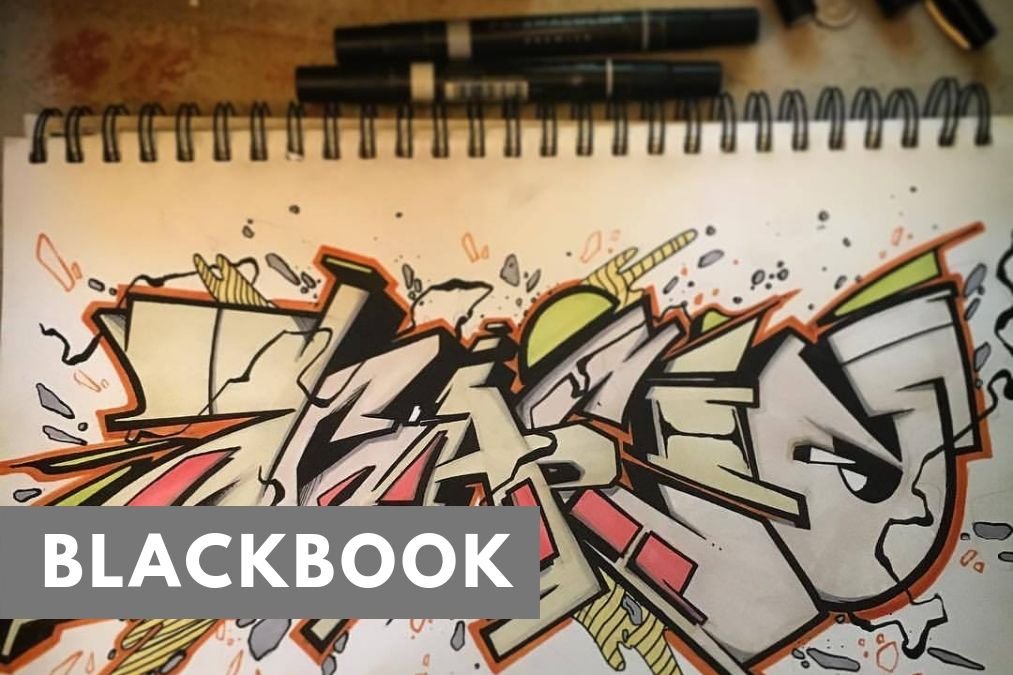
Blockbuster – a large graffiti with simple, legible letters. Often painted by a brush or a roller.
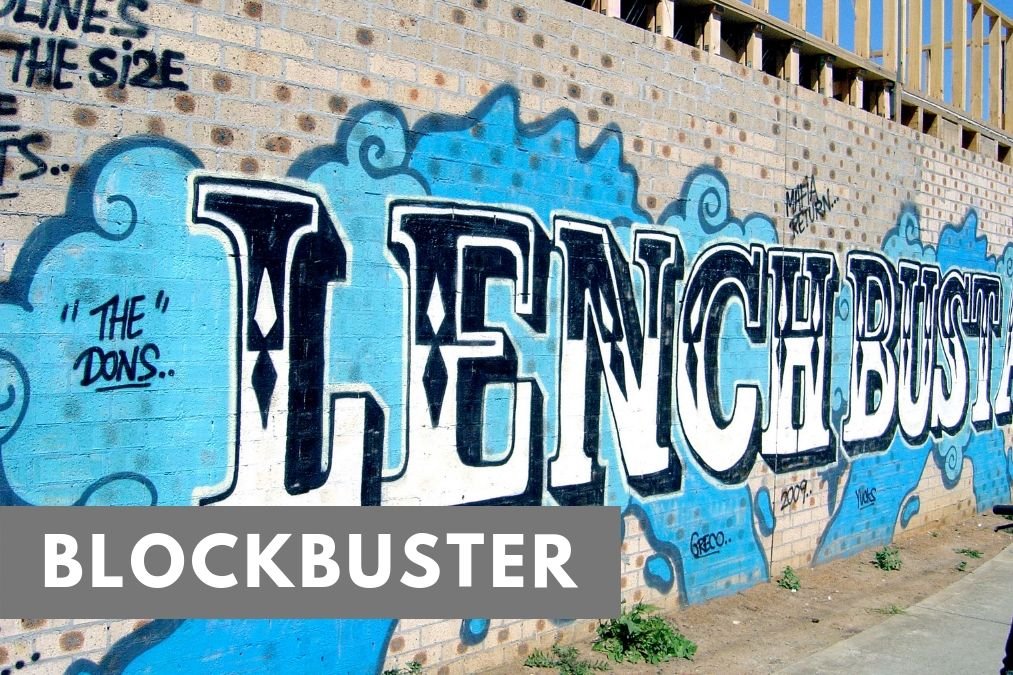
Bombing – To bomb or hit is to paint many surfaces in an area. Bombers often choose to paint throw-ups or tags instead of complex pieces, as they can be executed more quickly

Buff – when officials remove graffiti from walls and public spaces
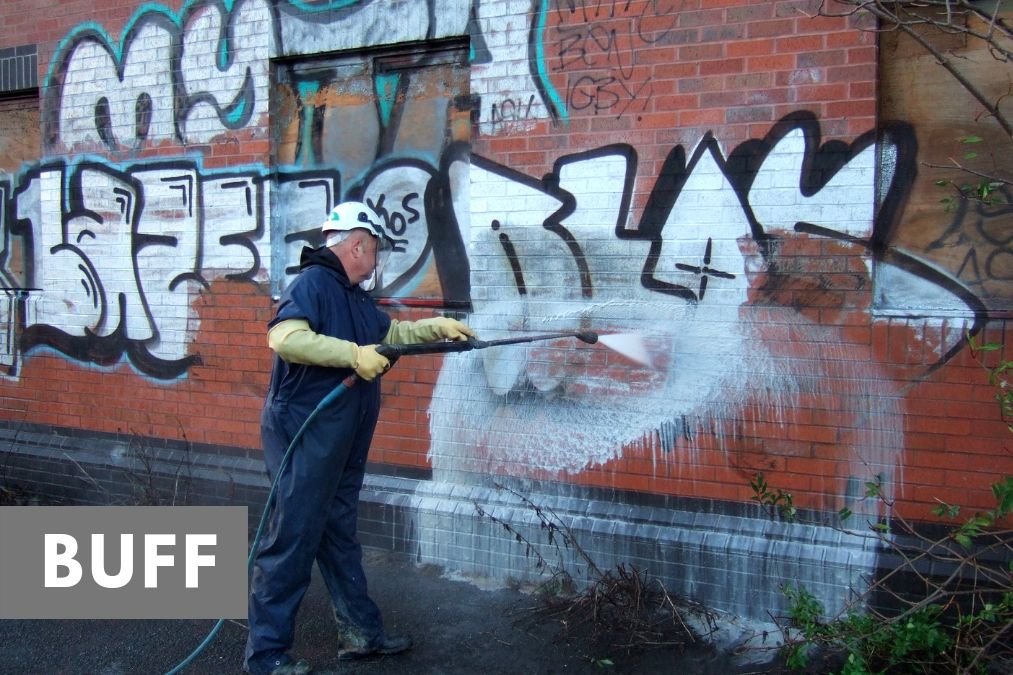
Burn – to beat another artist at a style
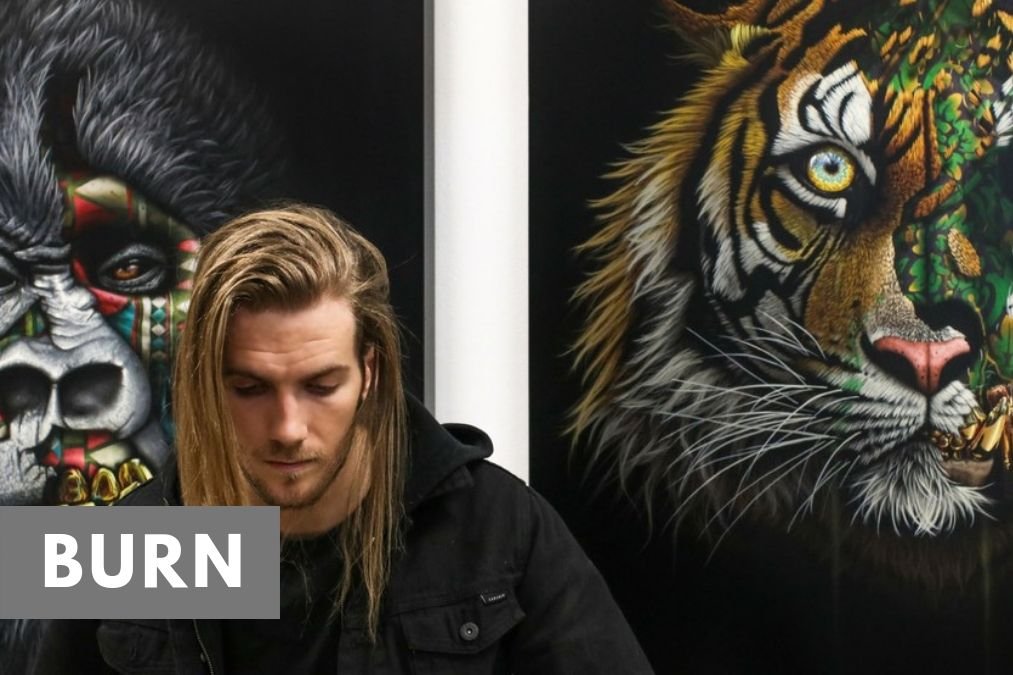
Burning – any piece that hasn’t been removed. “It is still burning on the street”

Cap – to paint over another graffiti artist’s work with the intention to diss it. Derives from a writer named “Cap” who was infamous for making throw-ups over others’ pieces.

Chill Spot – Sport where you have a low chance of getting caught and you can take your time to practice your art

Fire Extinguisher – A fire extinguisher that has been filled with diluted paint (typically of the latex variety) for the purpose of utilizing the pressurized paint to quickly produce large tags. Due to decreased control one has over the application of paint when using this method, it tends to result in a sloppier, far less polished look.

Heaven Spot – An elevated, dangerous spot to do graffiti, somewhere you can fall from, like a bridge

Legal – a graffiti piece or production that is made with permission.

One-liner – A tag, throwie, or bomb written in one constant motion. These may be done with any writing utensil. The tip or nozzle of the writing implement does not lift from the canvas until the tag is complete.
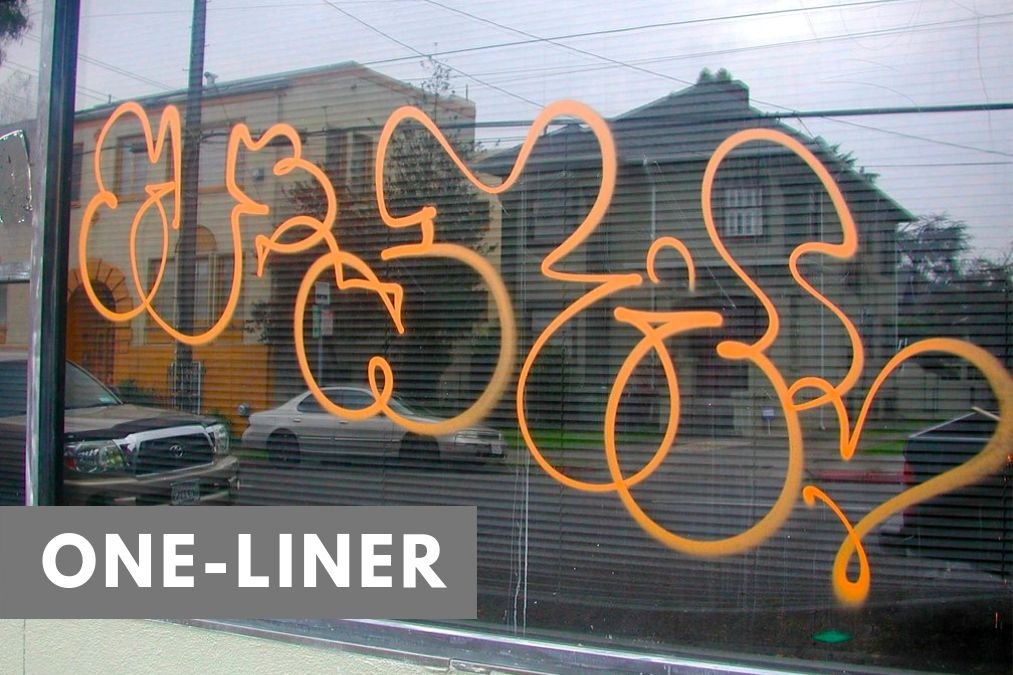
Lorem ipsum dolor sit amet, consectetuer adipiscing elit, sed diam nonummy nibh euismod tincidunt ut laoreet dolore magna aliquam erat volutpat.

Piece – (short form of masterpiece) A large, complex, and labour-intensive graffiti painting. Pieces often incorporate 3-D effects, arrows, and many colours and colour-transitions, as well as various other effects. These will usually be done by writers with more experience. Originally shorthand for masterpiece considered the full and most beautiful work of graffiti). A piece requires more time to paint than a throw-up. If placed in a difficult location and well-executed it will earn the writer more respect. Piece can also be used as a verb that means: “to write.

Piece-over – To cover another artist work but not with the intention to diss. Graffiti artist know that their art form is transient and will be covered over time.

Roller – A paint roller, or any graffiti created primarily or exclusively through the use of such a paint roller. Due to the rectangular application pattern inherent to the use of a paint roller, rollers most often make use of block lettering, though some writers that specialize in rollers develop advanced techniques to get around this shortcoming. Rollers will more often than not involve the use of extension poles, with the added reach allowing the writer to place a roller in places that would otherwise require the use of ladders and/or rope-access gear to reach with a spray can.
While rollers come in a range of sizes, they are particularly favoured for writing letters larger than can be practically accomplished with spray paint alone, and the largest examples of graffiti to be found are virtually all produced as rollers. Writers that work with rollers will typically aim to combine size, spot visibility, a colour choice that contrasts with the chosen canvass, and highly legible block lettering, resulting in a roller that’s recognizable from much further distances than feasible with spray techniques

Soak up – To consider other pieces for inspiration.
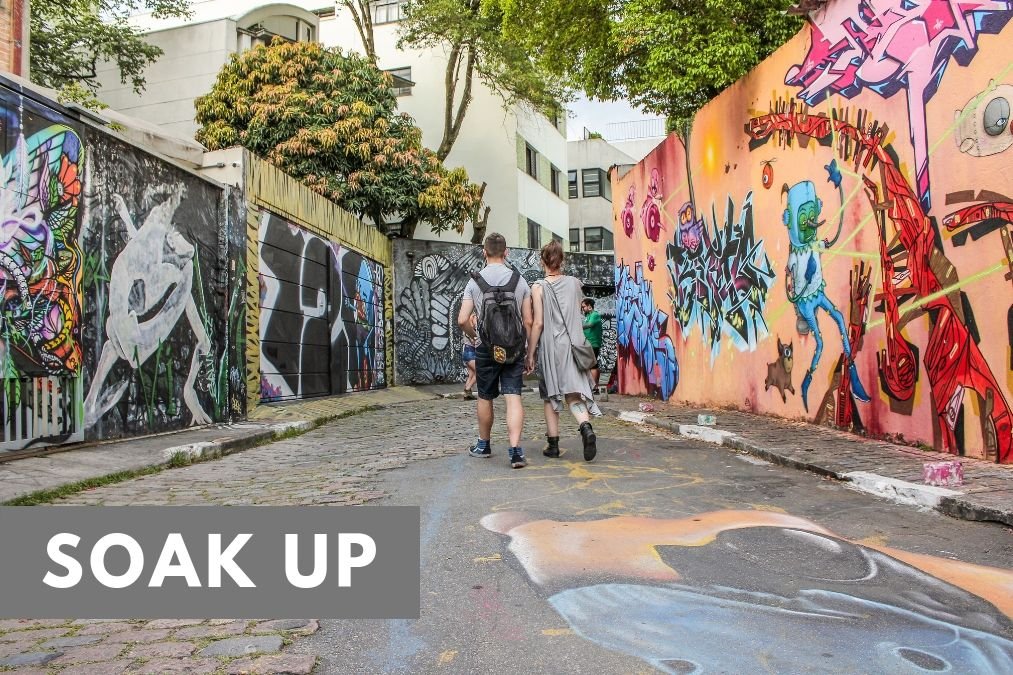
Sticker – also referred to as “labels” or “slaps.” A sticker (often obtained from shipping companies and name greeting labels) with the writer’s tag on it. Stickers can be deployed more discretely than other forms of graffiti, making them a popular choice for public places such as crosswalk signs, newspaper dispensers, stop signs, phone booths, etc. A popular sticker that was used originally was the “Hello my name is” red stickers in which a writer would write their graffiti name in the blank space. Reflector stickers, found at hardware stores are sometimes assembled to form a crew meaning or individual writer’s moniker

Throw-up – A throw-up or “throwie” sits between a tag and a bomb in terms of complexity and time investment. It generally consists of a one-colour outline and one layer of fill-colour. Easy-to-paint bubble shapes often form the letters. A throw-up is designed for quick execution, to avoid attracting attention to the writer. Throw-ups are often utilized by writers who wish to achieve a large number of tags while competing with rival graffitists. Most graffitists have both a tag and a throw-up that are essentially fixed compared to pieces. It is mostly so because they need to have a recognizable logo for others to identify them and their own individual styles
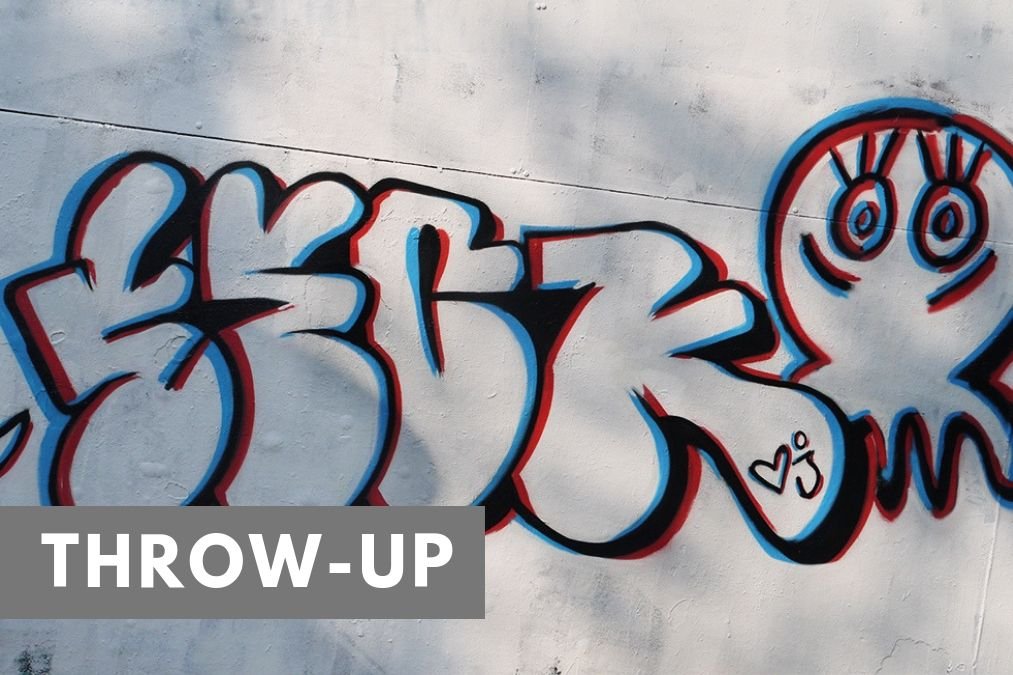
Toy – someone that is an amateur who lacks style and gets no respect.
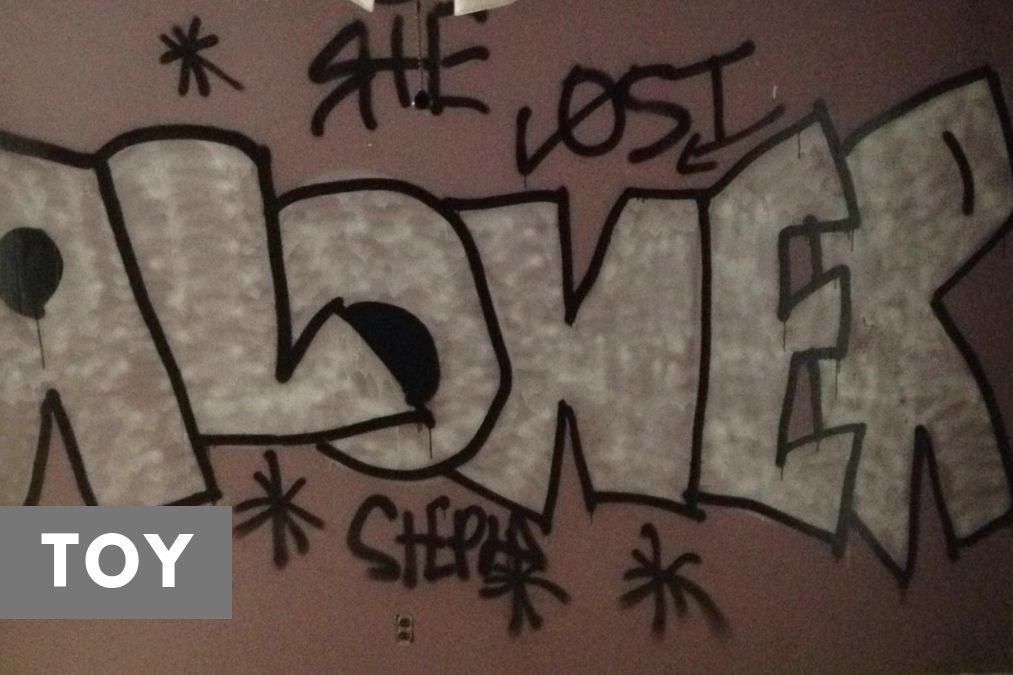
Wildstyle – graffiti with text so stylized as to be difficult to read, often with an interlocking, three-dimensional type


